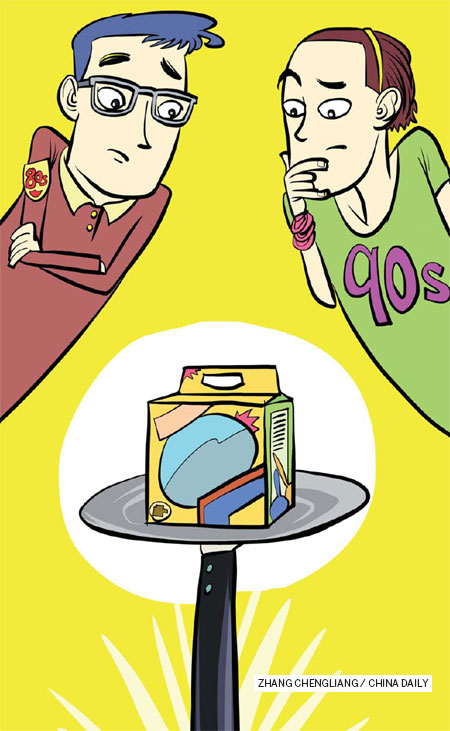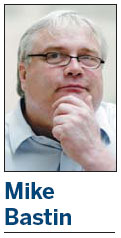Decade of difference in a generation
Updated: 2013-06-21 08:58
By Mike Bastin (China Daily)
|
|||||||||||


Foreign brands should note Chinese shoppers born in the 1990s vary a great deal from those born in the 1980s
While China's economic miracle continues, with GDP still growing at around a healthy 8 percent, more discussion centers on the emergence and changing nature of Chinese consumerism.
Most attention is on the younger generations, usually the heaviest consumers of most branded products. Reliable estimates put the number of Chinese consumers between the ages of 18 and 35 at about 440 million.
But how much is known about the needs and desires of these younger Chinese consumers and how should European companies tailor their marketing campaigns to attract and retain this large and increasingly affluent market segment?
Due to the almost simultaneous commencement of China's opening-up and family planning policies in the late 1970s, younger Chinese consumers are perceived, and perceive themselves, as quite different from older generations.
China's rapid economic emergence since then has not proceeded at a gradual pace. The 1980s saw the foundations of economic development laid, followed by relatively rampant growth in the 1990s. It was during the early 1990s that foreign direct investment soared in China.
As a result, younger generations have experienced a very different and fast-changing consumer environment, with many world-famous brands penetrating the Chinese mainland, such as McDonald's and Ikea.
But this uneven pace of change has led to age segmentation of this younger section, with the ba ling hou, those born in the 1980s, separated from those born in the 1990s, the jiu ling hou.
Even though differences in consumption behavior between the ba ling hou and jiu ling hou may not be that great, there is certainly the perception that these two groups are different. Those born during this 20-year period often define themselves as either ba ling hou or jiu ling hou, although the latter resent being labeled as such.
But what are these differences and how can European companies adapt their marketing campaigns accordingly?
First, it is vital for European firms to appreciate that this entire group of younger consumers is increasingly bi-cultural, and that a blend of collectivistic and individualistic consumer values is emerging. It is also important to understand that this increase in modern values has not led to any substantial decrease in traditional values.
However, the jiu ling hou - at least those born into China's new urban middle-class families - have grown up in a significantly different environment compared with the ba ling hou. Shopping experiences for the jiu ling hou are much more about fun and adventure, and they can be characterized as far more hedonistic than the ba ling hou.
The jiu ling hou are also far more high-tech savvy than the older group, with greater use of and demand for the latest technology, and higher Internet adoption rates. Marketing campaigns targeting the jiu ling hou should, therefore, consider heavy use of social media rather than the traditional mass media
Generally, the jiu ling hou are more individualistic than the ba ling hou. For example, hierarchy and family values remain strong but are considered more important to the ba ling hou. Advertisements featuring the extended family will therefore resonate more with the older group.
Modern notions such as "open to change" and "self direction" are much more prevalent among the jiu ling hou and marketing campaigns and brand positioning need to adapt accordingly.
However, biculturalism is very much the rising trend, with traditional (Confucian) values such as mianzi (face) and guanxi (connections) remaining strong. But even here there are important differences in interpretation between the ba ling hou and jiu ling hou.
In buying a car, for example, the ba ling hou are motivated to buy an expensive, high-quality brand such as Audi or Mercedes to display material wealth and success in business, while the jiu ling hou will buy the same car, but will seek to gain face by displaying the fun, adventure and freedom that results.
Self-direction, independence and even non-conformist consumer values need to be incorporated into many marketing campaigns for the jiu ling hou. These values have replaced the follower mentality among the ba ling hou.
Until now, few Western brands have attempted any form of brand positioning and marketing communication that makes use of a China association or Chinese image, yet this is precisely what would appeal to the jiu ling hou. The ba ling hou will perceive any Chinese imagery as equivalent to low-quality and poor service, but the jiu ling hou will interpret it very differently.
Key to success for any advertising campaign targeting younger Chinese consumers, therefore, is a mixture of individualistic and collectivistic appeals.
Finally, it is vital for European firms to know that this change in consumer values across younger Chinese generations is continuing, and that increasing individualism will lead to greater diversity within similar age groups.
Personality and value-orientation will become more important factors, and although these are fairly consistent across the age groups of younger consumers at present, they will inevitably change, and European companies should invest in research into these areas.
Chinese consumerism continues to evolve and will probably increase in complexity, resulting in a totally new form of Chinese culture. This requires heavy investment in research.
The author is a visiting professor at the University of International Business and Economics in Beijing and a researcher at Nottingham University's School of Contemporary Chinese Studies. The views do not necessarily reflect those of China Daily.
(China Daily European Weekly 06/21/2013 page12)
Today's Top News
List of approved GM food clarified
ID checks for express deliveries in Guangdong
Govt to expand elderly care
University asks freshmen to sign suicide disclaimer
Tibet gears up for new climbing season
Media asked to promote Sino-Indian ties
Shots fired at Washington Navy Yard
Minimum growth rate set at 7%
Hot Topics
Lunar probe , China growth forecasts, Emission rules get tougher, China seen through 'colored lens', International board,
Editor's Picks

|

|

|

|

|

|





